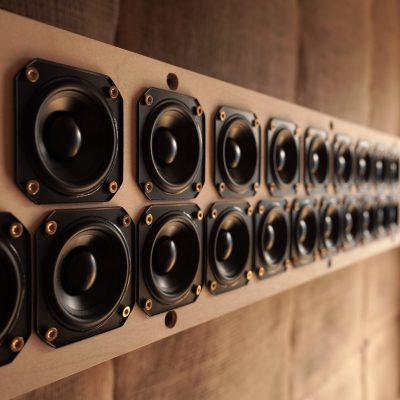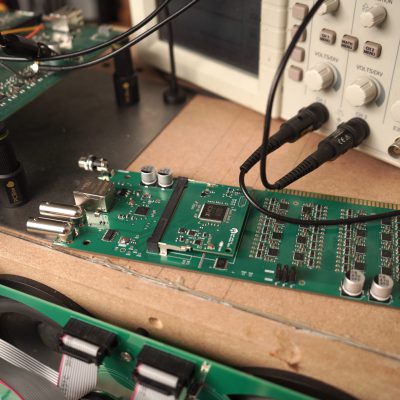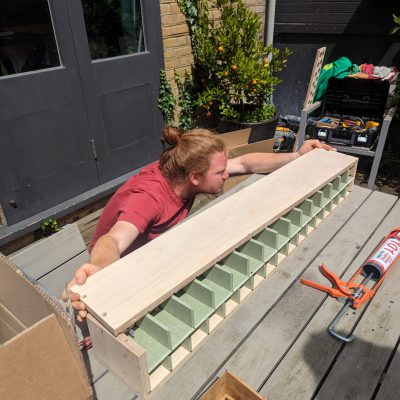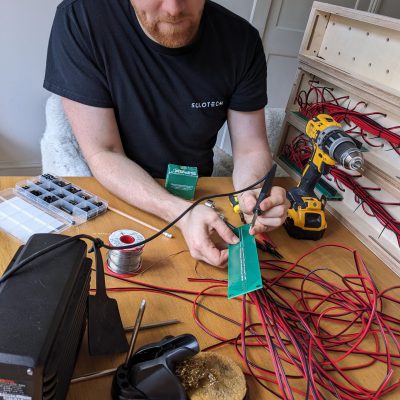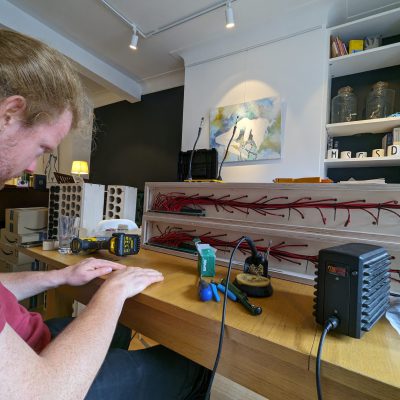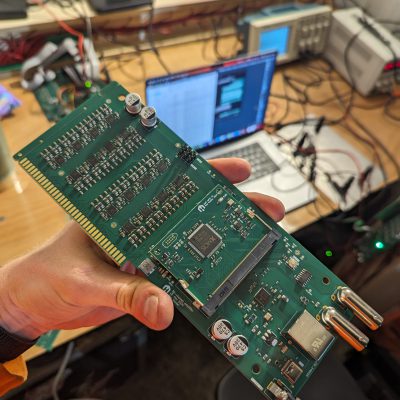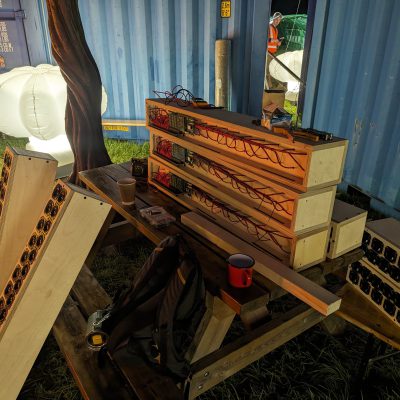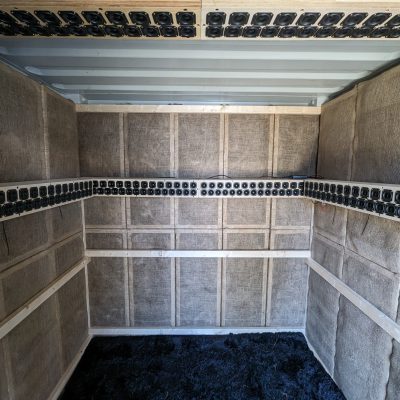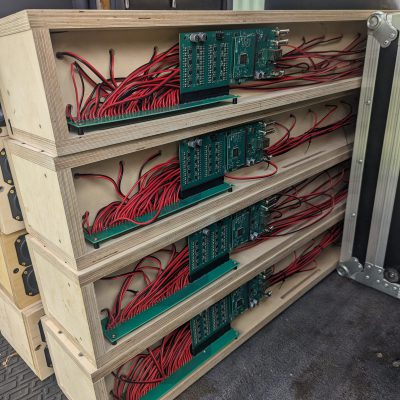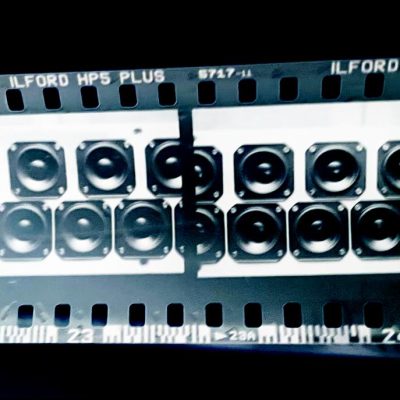Wave field synthesis is a spatial audio rendering technique that uses high-density loudspeaker arrays to reproduce the pressure fronts of spatially-distributed sound sources, creating realistic three-dimensional sound scenes. Unlike traditional surround sound algorithms, these virtual sources replicate the real-world source quasi-identically, and so don’t rely on the listener being in a certain position or ‘sweet spot’.
Existing wavefield systems are expensive, complex to set up, or have constraints (they are 2D, or can only virtualise sources behind the array). This project sets out to make a new-generation system with modern technology for a simple, easy-to-deploy, highly cost-effective WFS setup.
